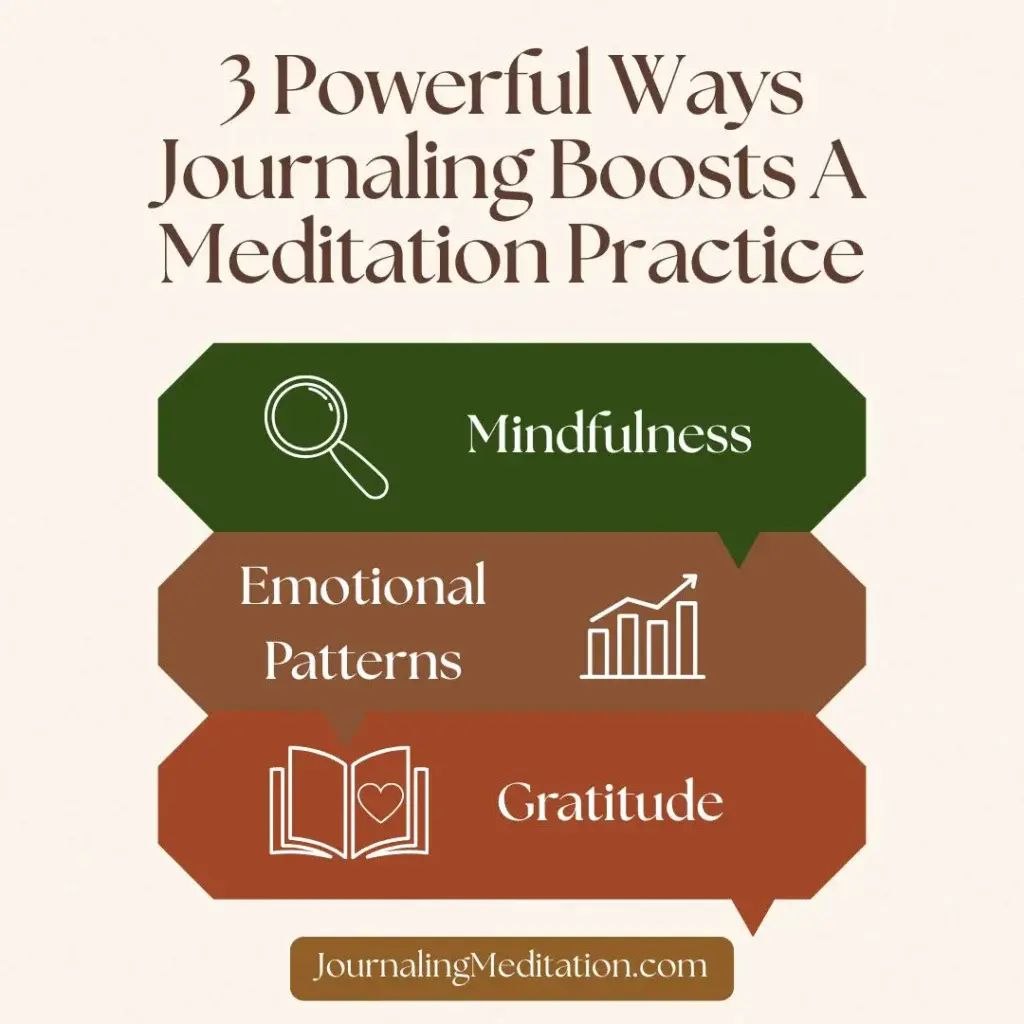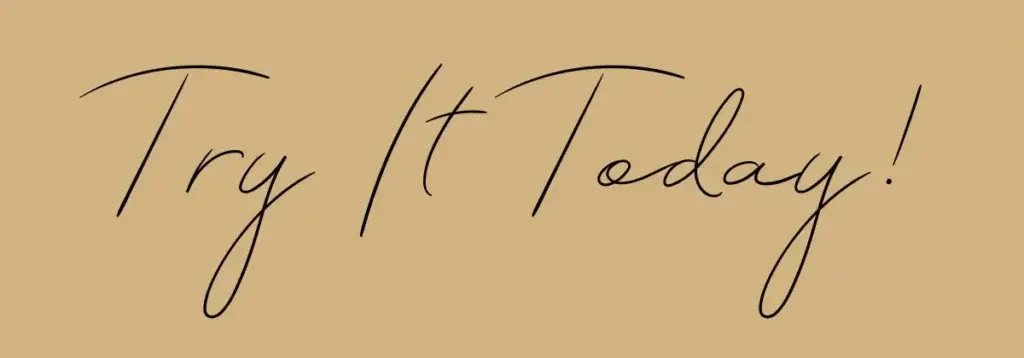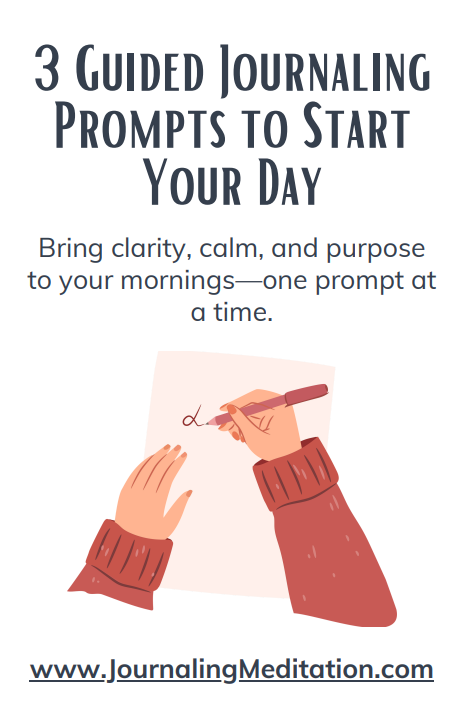
Many beginners think meditation is only about sitting still and quieting the mind. But there’s a simple companion practice that can deepen mindfulness and make meditation easier to stick with; journaling. Learning how to combine journaling and meditation is a game-changer for self-awareness, emotional clarity, and building a sustainable meditation habit.
Why Combine 📝 Journaling and 🧘 Meditation?
Meditation helps you notice thoughts and emotions. Journaling gives you a place to put them down, see them and hopefully process them. Together, they work like two sides of the same coin:
Once you feel comfortable with this combo, try exploring more beginner-friendly methods like those in 9 Easy Meditation Exercises for Beginners.
- Mental clarity: Writing clears mental clutter and gives you space to let it all out without anyone judging. This can help clear your head for meditation.
- Deeper self-awareness: Journaling can catch insights to explore that might come up during meditation.
- Evidence-based benefits: Research shows journaling reduces stress and anxiety (American Psychological Association), while mindfulness practices enhance emotional regulation (Journal of Experimental Psychology).
Preparing to Journal Before or After Meditation
When to Journal
One of the biggest questions is when to journal, before or after? It just comes down to personal preference and what works for you.
- Before meditation: This can help release racing thoughts onto paper so your mind feels clearer.
- After meditation: This records insights, emotions, or new perspectives before they are forgotten.
Tools You Need
- A dedicated meditation journal or notebook.
- A smooth-writing pen and quiet space.
- Optional: calming tea or a candle is a great way to signal “journaling time.”
Mindset for Success
Don’t worry about grammar or proper structure. Treat journaling like part of meditation itself; just observing and jotting down, not judging.
3 Powerful Ways Journaling Boosts Meditation Practice

1. Enhances Mindfulness
Writing helps you notice feelings, thoughts, and physical sensations with more detail. A way to walk through them. And this strengthens the understanding of that feeling, thought or sensation.
2. Tracks Emotional Patterns
Journaling uncovers unrealized issues or triggers that make it hard to focus. Over weeks, you’ll see progress and shifts in mindset that you may not have noticed without a record.
3. Strengthens Intentions and Gratitude
By writing intentions before meditating, you give your practice a clear direction and intention. Gratitude journaling afterward can in turn help improve your mood and reinforce positive thinking. Again, It’s up to you.
How to Start a Journaling and Meditation Routine
Starting small is the best approach. Here’s a simple 10-minute practice:
- Choose a consistent time when you have 10 minutes.
- Write a quick prompt like: “What am I bringing into my meditation today?”
- Meditate for 5 minutes, using techniques from this beginner’s guide.
- Journal afterward about any thoughts, feelings or physical sensations.
- Review weekly to catch changes in your practice and/or mindset.

Check Out This Challenge With Prompts Already Written For You!
Tips to Stay Consistent
- Keep your journal next to your meditation cushion or mat.
- On difficult days, jot down just 2-3 sentences. That’s enough.
- Use meditation apps that include a built-in journaling feature.
- Reward yourself with something relaxing after each session.
Common Challenges and How to Overcome Them
- “I don’t know what to write.” – Start with simple prompts like “How do I feel right now?”
- “I forget to journal.” – Set a reminder or attach journaling to a daily activity like morning coffee.
- “I’m not sure it’s working.” – Read old entries to see subtle but powerful growth over time.
Quick Bonus: Free Journaling Prompts for Meditators

- “List 3 feelings before and after meditation.”
- “What did I learn about myself during this session?”
- “One thing I’m grateful for in this moment is…”
❓FAQ Section
Combining journaling with meditation often raises questions for beginners. Here are some of the most common Q and A’s to help you get started.
What should I write about after meditating?
You can write about anything that comes to mind. Thoughts, emotions, body sensations, or moments of insight, even struggle. Simple prompts like “How do I feel now compared to before meditating?” can help you start.
How does journaling help with mindfulness?
Journaling increases self-awareness by helping you notice patterns in your thoughts and feelings. This reflection complements meditation, making it easier to stay present and helping to observe without judgment.
Do I need a special journal for meditation?
No, a regular notebook works fine. However, many people find that having a dedicated meditation journal makes it easier to track progress and stay motivated.
Journaling and meditation complement each other beautifully. Journaling clears the mind, captures insights, and makes meditation easier to commit to long-term.

Start small – 5 minutes of meditation and maybe 3 minutes of journaling. See how this combo deepens your mindfulness practice. Try it today and share your first journaling insight in the comments!





